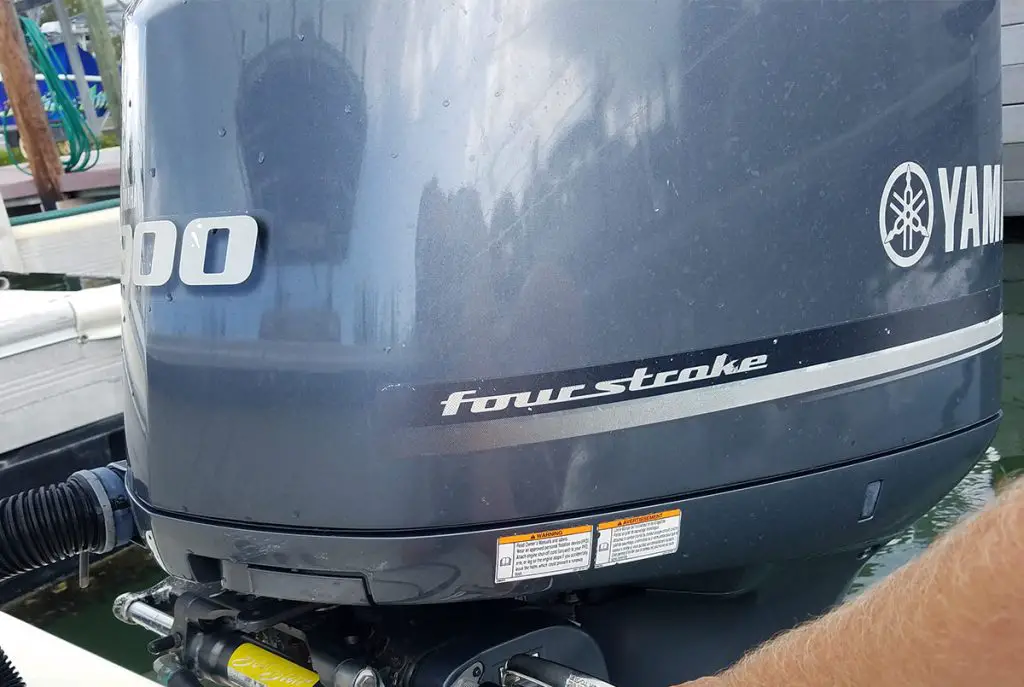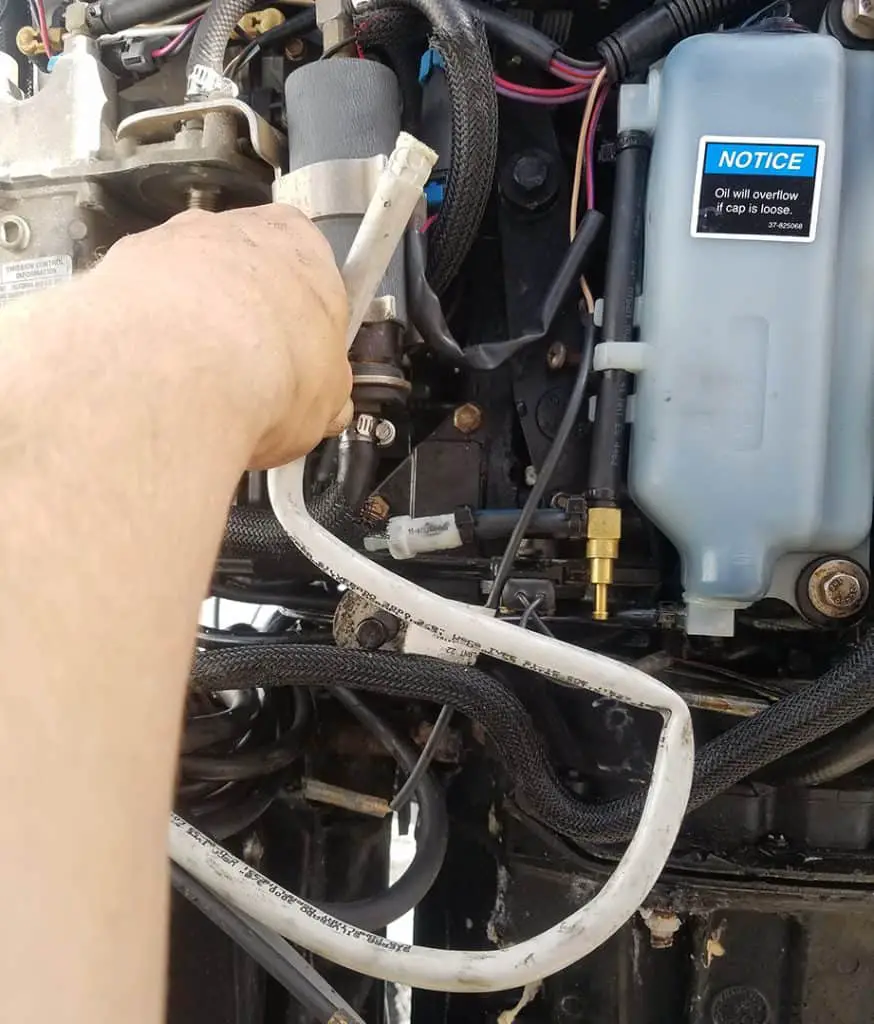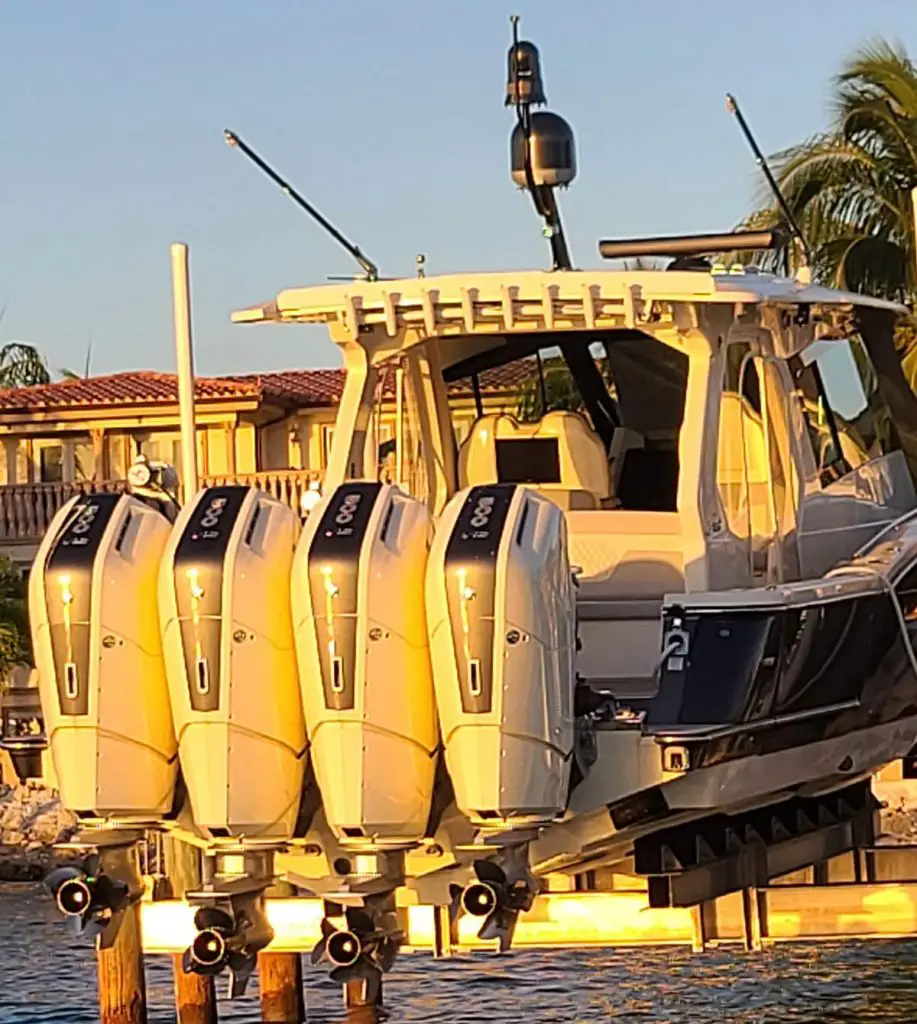If you are new to boating, or combustion engines in general. Then you might be asking yourself this question.
Is My Outboard A 2 Stroke? If you are adding oil to a tank on the boat, or to the engine, or if you are adding oil to the fuel when you are adding fuel to your boat. Then your outboard is a 2 stroke.
If you are still unclear, then you will want to know these things here about your outboard to avoid super expensive repairs!
What Is A 2 Stroke Outboard?
A 2-stroke outboard is in reference to the number of cycles the pistons take in the combustion process.
When the piston comes up and the spark plug fires, it pushes the piston down. When the piston goes down, it sucks in new fuel and air and pushes the exhaust out at the same time.
Then when it gets to the bottom, it comes back up. Once the piston comes back up a second time and compresses that fuel and air.
The spark plug will ignite and push the piston back down again. Restarting this cycle of coming up and down.
Since the piston only has to go down and back up again. This creates two cycles of the piston or one rotation of the crankshaft.
This up and down movement is called a “stroke”, or stroke of the piston. This is where we get the nickname, 2 Stroke!
But the biggest reason there is a major difference between this type of combustion engine. And its counterpart, being the 4 stroke.
Is that this outboard requires you to add oil to it. We’ll cover the four-stroke next.
The 2-stroke outboard has one major factor that you have to be aware of. Being that it is absolutely necessary to add oil to the engine’s system!
Two-strokes “burn” oil. Which means that we have to add 2-cycle oil to the engine in order to keep it running.
This can be done by either adding oil to an oil tank feeding the engine oiling system. Or by adding oil directly to a tank that is on the engine every time you fill up your fuel tank.
Or the oil can be mixed with the fuel that is put into the tank. Often times referred to as “premixing.”
This oil is what lubricates all the components of the outboard engine. Without this oil, you are running the risk of catastrophic failure of the engine.
And that will be a massively expensive problem to have!
What Is A 4 Stroke Outboard?

Now a 4 stroke outboard engine is an engine that requires that piston to take two more cycles or revolutions. In order to complete the combustion process of the engine when it is running.
This is because the engine incorporates a different set of parts to it than the two-stroke. These engines have a much “cleaner” combustion process than the 2 stroke.
Because they separate the intake and the exhaust strokes from each other.
The process goes from the spark that pushes the piston down. Then exhaust when the piston comes back up, pushing all the exhaust out of the cylinder.
And then it will go down again and suck in the fuel and air.
Then it comes up again on what is called the compression stroke. And then the spark will happen again, pushing the piston back down.
Creating 4 strokes of the piston, or two full rotations of the crankshaft.
But what relates to you and your outboard. Is that these engines do not require you to add oil to them every time you fill up your fuel tank.
That is because they have an oil pan that stores 4 cycle engine oil. Like the vast majority of cars that are on the road today.
These engines require oil changes where that old oil gets changed on different service intervals. (Some money-saving tips on servicing your engine!)
The four-stroke outboard engine is the most produced outboard that you can buy today.
New 2 Stroke Outboards For Sale
With restrictions on environmental impacts, and the cost-saving benefits of a four-stroke when it comes to fuel economy.
The ability to get a brand new 2-stroke outboard will depend on where you are located.
If you are in Canada, the USA, or most of Europe. Finding a brand new 2 stroke for sale will be hard to do.
Most manufacturers are no longer producing 2 strokes at all, but there are a couple of companies that do still make them and sell them in other countries.
This is important because it will help you to see whether or not you have a 2 stroke or not!
Can You Tell If An Engine Is A 2 Stroke or A 4 Stroke Just By Looking At It?

Visually telling if you have a 2 stroke by looking at it is actually pretty easy. If you don’t want to take the cowling off, most 4 strokes actually say four-stroke on the cowling!
Which makes it easy to tell. But other times you will find that there isn’t any such designation on the engine cowl.
And you will need to know what brand and kind of model engine you are looking at.
So, if you don’t know about the models, then the other way to tell if an engine is a 2 stroke is by looking at it.
Is to take the cowling off of the engine and look at the actual engine itself.
The two-stroke engine is going to have an oil tank on the engine. Or it will have oil lines running all over the engine.
Then you will also be able to see the difference because the 4 stroke is going to have a dipstick that will let you check the oil level in the oil pan.
So if you are looking at the engine and see a dipstick.
Pull it out and see if there is oil on it! If there is, then you have a four-stroke.
If you don’t see the dipstick and instead see an oil tank, then you have a 2 stroke!
Check Us Out!
We hope that this article has helped you out in seeing if your engine is a 2 stroke or a 4 stroke!
If you would like to learn even more about your boat and all the components that are in the boat. Then you can consider joining our Boating Academy where we have created video courses that do just that! You Can join Here!
You can also check out our Youtube Channel where we create all kinds of helpful boating videos and content for all kinds of boaters!
And if you would like to support us to continue bringing you great content, please click the link below to Amazon where we get a commission from anything you are already going to buy! Click Here To Amazon!
Here are some other super helpful articles that you might find interesting!

